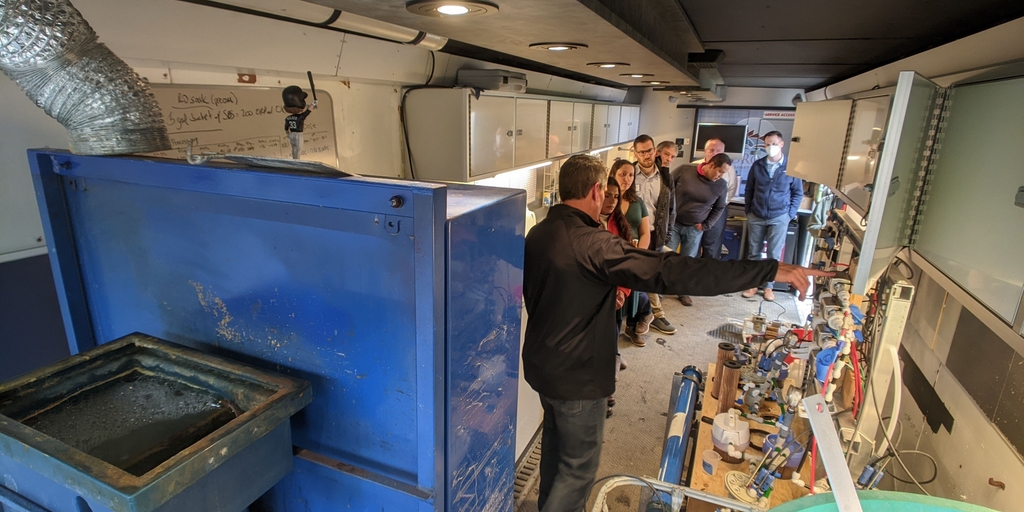Garver, LLC advances zero liquid discharge research
Enhancing circular economy research with flow and liquid analysis
Garver’s Water Business Line was awarded the United States Bureau of Reclamation’s (BOR) Pitch to Pilot Research Project, allowing their research team to embark on a journey to do something that is rarely accomplished in the research community: vetting a zero liquid discharge (ZLD) treatment train to recover the saline cooling tower blowdown. If successful, the project would prove how their pilot train prevents the salt from entering the sewer system.

Members of the research team give a tour of the Pitch to Pilot research trailer to members of the DOE, NREL and Lawrence Berkley Labs.
The results
-
Following field testing using Endress+Hauser and Rockwell Automation instrumentation, Garver discovered that its EC + CLAR + MF + RO with VAED concentrate treatment train consistently met its water quality goals in a ZLD configuration.
-
Garver met water quality goals without any chemical pretreatment under start-stop operation (for up to four months of downtime without the addition of membrane preservatives), while consistently achieving > 99% TDS reduction.
-
Garver will continue focusing on opportunities to address critical topics like salt accumulation in watersheds, and instrumentation and technology from manufacturers like Endress+Hauser and Rockwell Automation will continue to play a pivotal role.
The challenge
Fouling of RO membranes is one of the most common challenges, requiring intense chemical pretreatment and periodic chemical clean-in-place maintenance. Not properly designing, operating and maintaining an RO system can lead to high energy intensity and a high likelihood of failure. The main driver for the research was developing a disruptive desalination treatment train that requires less chemicals and energy than commercially available technologies.
The solution
With the blowdown’s sizeable effect on watershed health and at a time when water reuse is at the forefront of national and global discussions, Garver began looking for opportunities to research and create a system to improve saline blowdown from commercial and industrial cooling towers. This led to the collaboration with Endress+Hauser and Rockwell Automation to provide the necessary instrumentation and technology to trend treatment efficacy and energy intensity.
